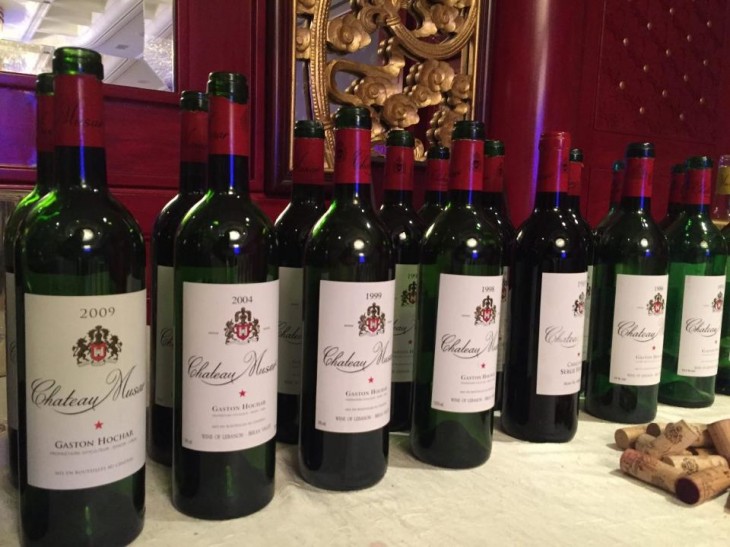
When Hugh Johnson, the inimitable British wine writer, coined the terms “old world” and “new world” to refer to wines from traditional European regions versus former European colonies, he left out the birthplace of wine: the ancient world. How else should we classify wine producing countries like Georgia, Lebanon, Armenia and Israel that are a few thousand years older than the “old world”?
Georgia boasts itself as the “cradle of wine civilization” with winemaking culture going back over 6,000 years, several thousand years before the first vines were cultivated in Bordeaux, Tuscany or Rioja. The wines from Georgia were favorites of the former Soviet Union’s power elite because of the quality and history of the wines, especially from the region of Kakheti. But a ban on Georgian wines by Russia from 2006 until 2013 meant the industry was forced to look for alternative export markets.
As a result, Georgian wines have made substantial inroads into China – the Georgian agriculture minister said a free trade agreement to be signed in December this year will be hugely beneficial for both the Chinese and Georgian wine industries. According to China Daily, Levan Davitashvili, Georgia’s Minister of Agriculture, said 5 million bottles of Georgian wine were exported to China in 2015. They are likely expecting that number to double in a few years after the free trade agreement comes into effect.
While Kakheti, Racha-Lechkhumi and Kverno Svaneti are difficult Georgian regional names to remember, the full bodied, gutsy red wines from the Saperavi variety blends are finding a market in China. I recently tasted over twenty Georgian wines and was very impressed with the red wines. Some were modern and juicy with a touch of savory herbs in wines like Teliani Valley’s 2013 Cabernet Sauvignon and Saperavi blend. While others were more earthy and tannic, made in the traditional style.
Another ancient wine region that has captured the hearts of wine lovers since the 1980s is Chateau Musar from Lebanon. It shot to fame in the 1970s when the wine was “discovered” by Michael Broadbent, according to Jancis Robinson. But the wine came into the world limelight in 1984 when the always-charming Serge Hochar of Chateau Musar became Decanter‘s very first Man of the Year.
Serge was one of my favorite wine people, always smiling and entertaining people with his 50-plus decades of experience and experimentation. Sadly, he died in a swimming accident earlier this year in January. His son Marc was recently in Hong Kong and led a number of wine tastings. The vertical tasting I attended, reconfirmed in my mind that Musar deserves its place as one of the premier wines from the ancient world. Currently, more than 90% of Musar is exported around the world.
Musar has its own style that was developed and refined by Serge Hochar over many decades. Red Musar is a blend of Cabernet Sauvignon, Cinsault and Carignan from vineyards in the Bekaa Valley. Serge believed in letting the wines take their time and do its own thing with minimal winemaker intervention – a process that can lead to technically faulty wines filled with brettanomyces (spoilage yeast with a barnyard aroma) and volatile acidity (smelling like nail polish remover). Every time he was asked about these faults, he would laugh and reply that he doesn’t care, as long as people are enjoying his wines.
I was fortunate to try eight vintages of Chateau Musar with Serge Hochar’s son Marc. We tasted wines as old as 1966, which was one of my favorites, to their most recent release, 2009. The latest release is still youthful and shows the wine’s aging potential but it is far too young to drink now. The vintages from the 1980s (1989, 1986) and the 1974 were not my favorites.
Below are my top three picks from the Chateau Musar vertical tasting:
1999 Chateau Musar
An unusually elegant Musar that is vibrant, fresh and lively with Pinot Noir-like aromatics. This medium bodied red combines elegance with depth; its floral, red berry-filled nose leads to a layered palate with complex flavors and silky tannins. The finish is long and lovely. A wine that is drinking well now but should keep for another decade easily.
94/100 points
1998 Chateau Musar
This vintage is a very different style from the 1999, which is light and dazzling. The 1998 is more evolved and savory. Flavors range from dried black tea leaves and tobacco to crushed autumn leaves. The palate is mellow, the tannins supple and all the elements in balance. A ready-to-drink vintage.
91/100 points
1966 Chateau Musar
This is a beautifully mature wine that is delicious to enjoy now. The wine has elegance, persistence and ethereal flavors of dried autumn leaves, black truffles and pu’er tea. Lovely, silky texture, supple palate and a long finish. An impressive wine that rivals the best of Bordeaux.
94/100 points
image copyright: Asian Palate









